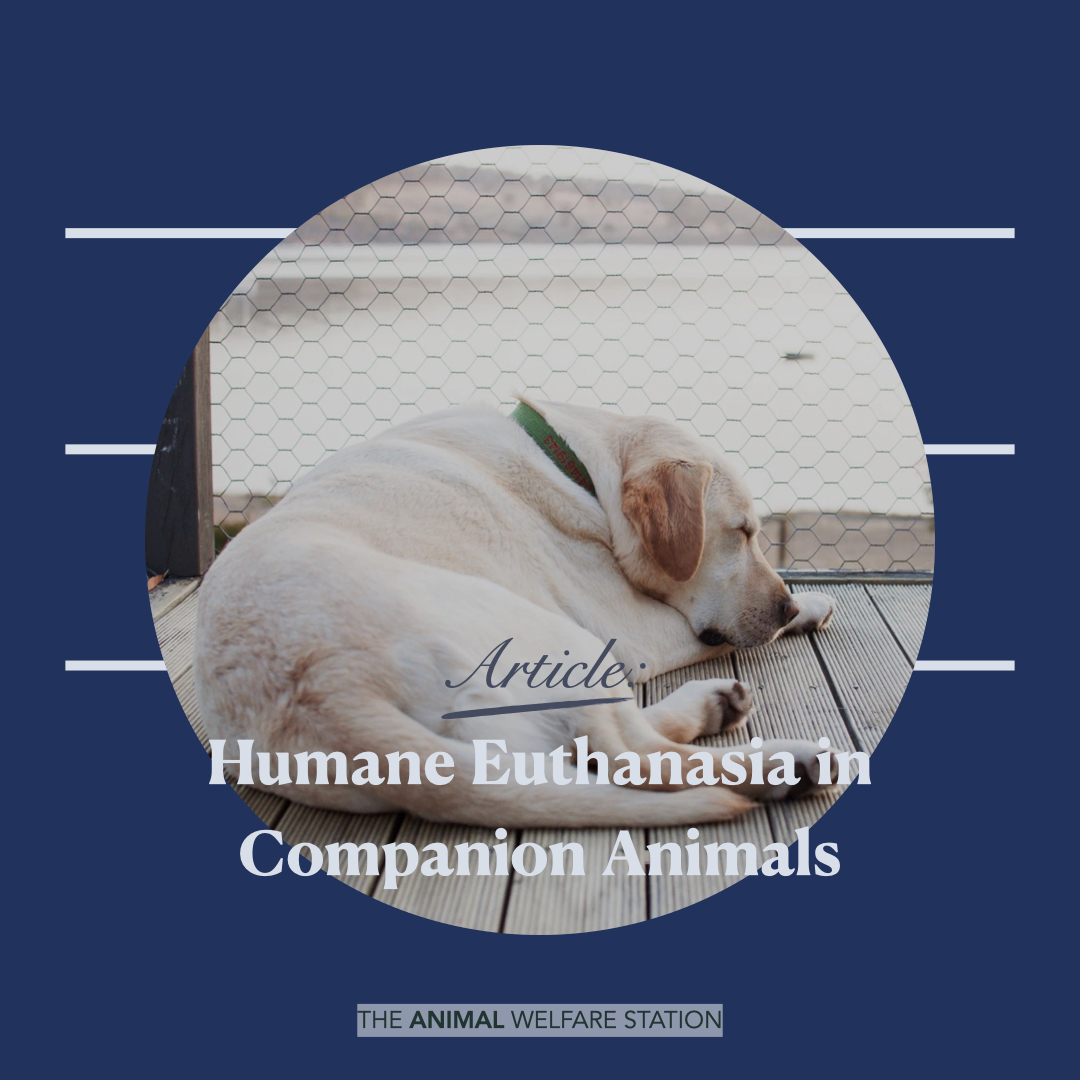In the realm of animal welfare, the topic of euthanasia often ignites impassioned debates. Is euthanasia a form of animal cruelty, or can it be considered a humane practice under certain circumstances? This question poses a challenge to our ethical principles, values, and understanding of suffering in both animals and humans alike. The contemplation of this subject necessitates a thorough examination of the multifaceted arguments surrounding euthanasia.
To navigate this discussion, one must first examine the definition and nature of euthanasia itself. Euthanasia, derived from the Greek word meaning “good death,” refers to the practice of intentionally ending an animal’s life to alleviate intractable suffering. It is typically administered by a veterinarian in a controlled environment, employing pharmacological agents designed to cause minimal distress to the animal. Proponents of euthanasia often argue that in cases of terminal illness or severe trauma, this act can indeed be a merciful release from their agony.
Yet, the question remains: can a practice intended for the welfare of animals be perceived as cruel? To adequately address this query, it is vital to consider the factors that contribute to the decision to euthanize. The primary motivation for euthanasia is to relieve suffering. When an animal faces debilitating conditions with no prospect for recovery, the ethical dilemma shifts from preserving life to minimizing pain and distress. A thorough assessment by a qualified veterinarian, combined with honest discussions with the animal’s caregivers, is usually integral to this decision-making process.
Furthermore, the emotional toll on pet owners cannot be underestimated. The heartbreaking decision to euthanize a beloved companion often stems from a place of love and compassion. By choosing to end their pet’s suffering, owners aim to implement an act of dignity during a profoundly distressing time. However, this point of view also begs the question: are we, as guardians of these creatures, equipped to make such an irreversible decision? Is there a fine line between humane intervention and an imposition of our own values and emotions onto animals who may have their own will to live?
Another concern arises from the influence of external factors on the decision-making process. In instances where resources are limited, and veterinary care is inaccessible, the pressure to euthanize can intensify. Animal shelters, overwhelmed by the influx of healthy animals and limited space, must often make heartbreaking decisions regarding which animals can be saved and which should be euthanized. The ethical quandary here is palpable: is it cruel to euthanize an otherwise healthy animal due to systemic flaws within our society? If a lack of resources or societal neglect leads to the tragic choice of euthanasia, does it still classify as humane practice?
Moreover, this conundrum raises the pivotal question of rehabilitation versus euthanasia. Advocates of animal rights often emphasize the importance of behavioral training and rehabilitation programs for pets displaying aggression or other challenging behaviors, rather than resorting to euthanasia as a readily available solution. This perspective aligns with the growing movement towards fostering an environment that supports second chances for animals bred into adverse situations. Advocates argue that these alternatives should routinely be explored and exhausted before considering euthanasia, particularly in cases where the animal’s quality of life remains intact.
In exploring the merits of euthanasia, we also need to discuss the ethical frameworks that inform our viewpoints on this contentious practice. The utilitarian perspective advocates for actions that maximize overall happiness and reduce suffering. According to this philosophy, euthanasia could be justified in circumstances where it alleviates greater pain for an individual animal. Conversely, a deontological viewpoint posits that some actions, such as taking a life, are inherently wrong, irrespective of the consequences. From this standpoint, euthanasia might be deemed an affront to the intrinsic value of the animal’s life, though it raises the question of how we categorize and prioritize suffering.
So, is euthanasia animal cruelty or a humane practice? This inquiry reveals itself as a labyrinthine issue, without a definitive answer. While some argue that it embodies an act of compassion, others vehemently contest its moral implications. As a society, we must engage in thoughtful discourse and careful reflection on how we handle the lives of animals under our care.
It is imperative to widen the scope of our discussion to include preventive measures and community support systems that can help mitigate the need for euthanasia. Solutions such as affordable veterinary care, support for shelters, and comprehensive spay and neuter programs could dramatically alter the landscape of animal welfare, potentially diminishing the instances in which euthanasia becomes the only option. By nurturing a society that values and respects the lives of animals, we collectively bear the responsibility of fostering humane and ethical practices.
In conclusion, while euthanasia occupies a complex intersection of compassion and moral conflict, it is vital to acknowledge the myriad factors that influence this decision. Conversations regarding the ethics of euthanasia highlight challenges that extend beyond individual cases, shedding light on systemic issues that must be addressed. As we continue to grapple with this difficult question, it remains paramount to advocate for the welfare of all animals, seeking to create an environment where life—and its preservation—takes precedence in all contexts.





